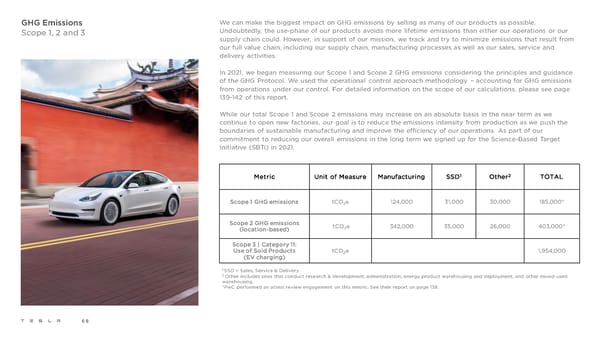GHG Emissions We can make the biggest impact on GHG emissions by selling as many of our products as possible. Scope 1, 2 and 3 Undoubtedly, the use-phase of our products avoids more lifetime emissions than either our operations or our supply chain could. However, in support of our mission, we track and try to minimize emissions that result from our full value chain, including our supply chain, manufacturing processes as well as our sales, service and delivery activities. In 2021, we began measuring our Scope 1 and Scope 2 GHG emissions considering the principles and guidance of the GHG Protocol. We used the operational control approach methodology – accounting for GHG emissions from operations under our control. For detailed information on the scope of our calculations, please see page 139-142 of this report. While our total Scope 1 and Scope 2 emissions may increase on an absolute basis in the near term as we continue to open new factories, our goal is to reduce the emissions intensity from production as we push the boundaries of sustainable manufacturing and improve the efficiency of our operations. As part of our commitment to reducing our overall emissions in the long term we signed up for the Science-Based Target Initiative (SBTi) in 2021. 1 2 Metric Unit of Measure Manufacturing SSD Other TOTAL Scope 1 GHG emissions tCO2e 124,000 31,000 30,000 185,000* Scope 2 GHG emissions tCO e 342,000 35,000 26,000 403,000* (location-based) 2 Scope 3 | Category 11: Use of Sold Products tCO2e 1,954,000 (EV charging) 1 SSD = Sales, Service & Delivery 2 Other includes sites that conduct research & development, administration, energy product warehousing and deployment, and other mixed-used warehousing. *PwC performed an attest review engagement on this metric. See their report on page 138. 68
 Tesla 2021 Impact Report Page 67 Page 69
Tesla 2021 Impact Report Page 67 Page 69